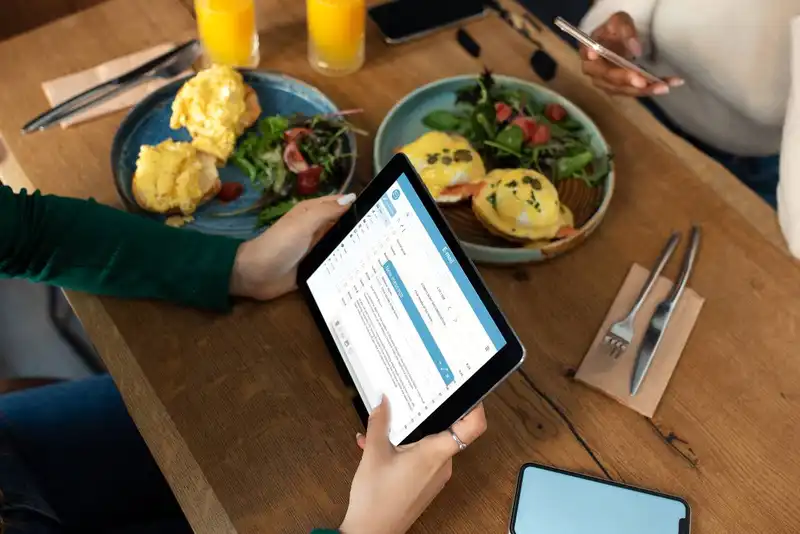What steps can restaurants take to start tracking market analytics?
Start with simple tools like POS features and loyalty programs, set clear goals, and regularly review data to integrate analytics smoothly into daily operations.
5 Key Market Analytics Metrics Every Restaurant Owner Should Track
Understand Customer Behavior
Running a restaurant is hard work. You have to manage the kitchen, serve guests, keep your staff happy, and still figure out what your customers really want. Without clear information, many choices - like what dishes to offer or when to run specials - can feel like guessing. This can be frustrating and might even hurt your sales.
That's why tracking the right data about your customers is so important. Restaurants that use customer data grow about 19% faster than those that don't. When you know who your customers are, what they buy, and how often they visit, you can make better decisions that bring in more business.
Market analytics is simply the process of looking at these numbers to understand your customers better. By focusing on a few key numbers, you can find out which dishes are popular, spot slow times, and see which groups of people come to your restaurant the most. This helps you make smarter choices without the stress of guessing.
Metric 1. Purchase Frequency

One of the most important numbers to track in your restaurant is purchase frequency. This means how often a customer comes back to your restaurant over a certain period. Why does this matter? Because repeat customers are usually the backbone of steady sales. It's much easier and cheaper to keep a customer coming back than to find a new one.
When you know how often people visit, you can spot patterns. For example, maybe some customers come in every week, while others only show up once a month. Understanding this helps you decide where to focus your efforts - should you reward frequent visitors with special deals? Or try to encourage one-time guests to return more often?
You can track purchase frequency using your point-of-sale (POS) system or loyalty program if you have one. Even simple methods like collecting email addresses or phone numbers at checkout can help. Once you have the data, look for the average number of visits per customer and identify any groups that visit less often than you'd like.
By increasing how often customers return, you increase sales without having to find new customers all the time. Small changes based on this data - like sending a reminder offer or creating a loyalty discount - can make a big difference in building a loyal customer base.
Metric 2. Item Popularity by Demographic
Knowing which menu items are popular is important, but understanding who is ordering them takes your knowledge to the next level. Different groups of customers - like younger adults, families, or seniors - often have very different tastes. Tracking item popularity by demographic means looking at sales data sorted by these groups to see what each prefers.
For example, you might find that younger customers favor spicy or trendy dishes, while older guests prefer classic comfort foods. Maybe families order more kids' meals or shareable plates. This insight helps you tailor your menu and marketing to match what each group wants. Instead of guessing what to promote, you can focus on dishes that actually sell well to the people visiting your restaurant.
Collecting demographic data might seem tricky, but you can start simple. Use loyalty programs where customers share their age or location, or analyze data from online orders, which often include basic customer info. You can also gather info through surveys or by tracking purchase behavior over time.
By knowing which items appeal to which groups, you can create targeted specials, adjust portion sizes, or highlight certain dishes on your menu. This focused approach can increase sales by making customers feel understood and valued.
Metric 3. Average Order Value (AOV)
Average Order Value, or AOV, is the average amount a customer spends each time they visit your restaurant. This number is important because increasing AOV means you make more money without needing more customers. Even small increases can add up quickly over time.
To calculate AOV, simply divide your total sales by the number of orders in a given period. For example, if you make $5,000 from 200 orders in one week, your AOV is $25. Tracking this regularly helps you see if customers are spending more or less and spot trends.
Once you know your AOV, you can take steps to increase it. For instance, suggest adding a side dish, dessert, or drink during the order. Offering meal bundles or combo deals encourages customers to spend a bit more. Also, training your staff to upsell politely can make a big difference.
Keep in mind that increasing AOV isn't about pushing customers to spend more aggressively - it's about making their meal experience better and more satisfying. By paying attention to this metric, you learn what customers are willing to add to their order and find ways to meet those needs.
Metric 4. Seasonal and Time-Based Trends

Sales at your restaurant likely change throughout the year, by season, or even by day and time. Understanding these seasonal and time-based trends is key to making smart decisions about your menu, staffing, and inventory.
For example, you might notice that certain dishes sell better in the summer, like salads or cold drinks, while heartier meals are more popular in winter. Lunch hours could be busier on weekdays, while weekends bring more dinner customers. Knowing these patterns helps you plan so you're ready for busy times and don't waste resources when it's slow.
Tracking these trends means looking at your sales data over weeks, months, or even years to find regular ups and downs. Many POS systems let you easily view this information. By spotting slow days or seasons early, you can run promotions or adjust your menu to attract more customers.
Preparing for seasonal changes also means managing your inventory better. Ordering the right amount of ingredients based on expected demand reduces waste and saves money.
By aligning your offerings with when and what your customers want, you improve their experience and make your restaurant more efficient. Paying attention to these patterns keeps you ahead of surprises and helps maintain steady sales all year long.
Metric 5. Market Penetration Rate
Market penetration rate measures how much of your local target audience is actually visiting your restaurant. In simple terms, it's the percentage of people in your area who become your customers. Knowing this number helps you understand how well your restaurant is connecting with the community.
For example, if there are 10,000 people in your neighborhood who fit your target demographic, and 1,000 of them visit your restaurant regularly, your market penetration rate is 10%. This tells you there's still room to grow and reach more potential customers.
To figure this out, you'll need two pieces of information - your actual customer count and the size of your local market. Customer counts come from your sales or loyalty program data, while local demographic information can often be found through public census data or market research reports.
Tracking market penetration helps you spot opportunities and decide where to focus marketing efforts. If your rate is low, maybe it's time to increase advertising or try new promotions. If it's high, your focus might shift to keeping those customers loyal.
Putting It All Together
Tracking a single metric can give you a helpful snapshot of your restaurant's performance. But when you look at all five together, you start to see the full picture - and that's when real improvements happen. Here's how each part fits into your business strategy -
1. Purchase Frequency
This shows how often customers return. If repeat visits are low, it may mean people enjoy your food but aren't finding a reason to come back. A loyalty program or follow-up offer could help.
2. Item Popularity by Demographic
This tells you who is ordering what. If you know younger guests love a certain dish but don't come in often, you might highlight that item in ads aimed at that group.
3. Average Order Value (AOV)
If your AOV is low during certain times, like lunch, you might bundle meals or suggest simple add-ons to raise the average ticket without changing your menu.
4. Seasonal and Time-Based Trends
Spotting busy and slow times allows you to plan staffing, inventory, and specials around customer behavior instead of guessing.
5. Market Penetration Rate
If only a small percentage of your local market is visiting, it's a sign to focus more on outreach - like improving visibility in your neighborhood or targeting specific customer groups.
By using these five metrics together, you stop relying on guesswork and start making decisions based on real data. This leads to smarter planning, better customer experiences, and ultimately, stronger and more reliable sales.
Practical Steps for Restaurant Owners
You don't need to be a data expert to start using market analytics in your restaurant. All it takes is a few small steps to begin collecting the right information and using it to guide better decisions.
Start by reviewing the tools you already have. Most point-of-sale (POS) systems can track order history, sales by item, and even customer visit frequency. If you're using online ordering or a loyalty program, those can provide demographic data and repeat customer insights. Organize your data weekly or monthly to spot trends over time - look at what's selling, when your busiest times are, and how much people are spending per visit.
Once you're tracking these basics, compare your performance with local market statistics. Are certain age groups underrepresented in your customer base? Are your sales following seasonal trends, or falling behind? These insights help you make smarter choices about your menu, staffing, and marketing.
You don't have to do all of this manually. Tools like Altametrics make it easy for restaurant owners to track, visualize, and act on these metrics - all in one place. With built-in reporting, real-time data, and clear dashboards, Altametrics helps you turn numbers into decisions that grow your business.
Take the guesswork out of running your restaurant. Learn how better data leads to better results by clicking "Schedule a Demo" below.
Get Started with Smart Data Capture
Optimize Your Marketing Efforts with Altametrics
Must-Read Content

How to Do a Market Analysis for Quick Service Restaurants


Menu Engineering with Customer Behavior Analytics

Top Consumer Reports Metrics Every Restaurant Owner Should Monitor










